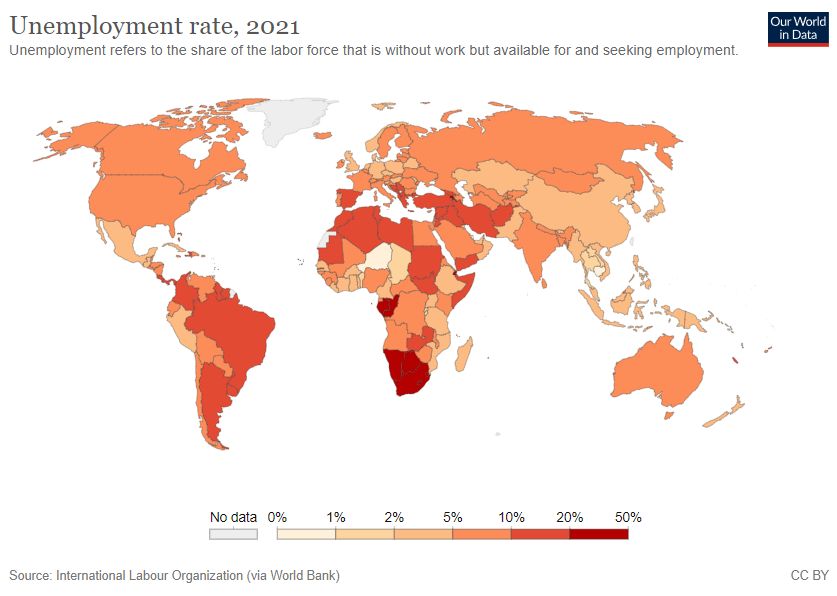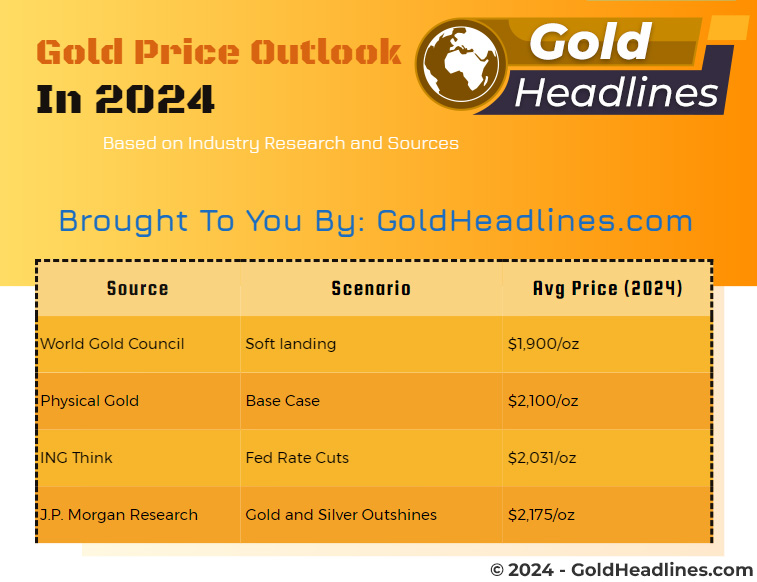Gold, which is often considered as a ‘safe haven’ asset, does gets influenced by geopolitical events. Its price rises during the periods of political instability, economic uncertainty, or during the conflicts, as investors try to seek ways to protect their wealth. During the 2008 financial crisis, the prices of gold did soared as investors moved away from volatile stocks as well as bonds. Same way, geopolitical tensions, such as wars or trade disputes, can trigger a flight to safety, pushing up gold prices. If you look at it the other way then, periods of political stability and economic growth can lower the demand for gold, and thus reduce its prices. Therefore, understanding the relationship between geopolitics and the gold market is not just a mental exercise, but a practical approach in today’s global economy.
Understanding the Relationship Between Geopolitics and Gold
The connection between geopolitics and gold is quite complex and its a web of cause and effect, Where political events and economic policies often move the gold markets. Gold, which is often seen as a barometer of geopolitical stability, is more than just a precious metal with intrinsic value but its a mirror that reflects the state of global affairs.
Political developments (Domestic and International) can significantly shape gold markets. For instance, changes in government policies, such as fiscal or monetary policy, could influence the value of that country’s currency. This, in turn, will affect the price of gold, as gold often moves inversely to the US dollar. Same way, political instability or wars and conflicts can lead to increased demand for gold and it drives the price up.
On other hand fluctuations in gold markets can also impact geopolitics. A strong surge in gold prices can bolster up the economies of gold-producing nations and shift power dynamics on the global stage.
The Evolution of Gold as a Global Commodity
Gold’s journey from a precious metal to a global commodity is a long story that spans across centuries and continents. Its evolution as money is deeply connected with the history of human civilization, the rise and fall of empires, the ups and downs of economies, and the shifting tides of geopolitics.
In ancient civilizations, gold was cherished for its lustrous beauty and rarity. It was often used in religious artifacts, royal adornments, and as a form of early currency. For example the Egyptians did amassed vast quantities of gold and they believed that it would accompany their pharaohs into their afterlife.
Then the trade networks expanded and gold began to play a crucial role in the global economy. It soon became a standard medium of exchange and started facilitating trade across different regions and cultures. The establishment of the gold standard in the 19th century further cemented gold’s role as a global commodity. Countries agreed to convert paper money into a fixed amount of gold, creating a stable international monetary system.
In 20th century we saw significant changes. The gold standard was abandoned in favor of fiat currencies, and gold’s role in the economy changed. Today it is no longer used as a currency but it still remains a vital financial asset.
Historical Overview of Gold and Geopolitics
From the ancient civilizations to the modern era, the value of gold and the fate of nations have been inextricably linked.
In olden days, it was not just a piece of precious metal but also a symbol of power and wealth. Its possession signified nation’s strength and influence.
Civilizations like the Egyptians, Romans, and Incas stockpiled vast quantities of gold, which in turn played a crucial role in their economies as well as political systems. Then the Middle Ages saw the emergence of gold coins as a medium of exchange. The control over gold mines and trade routes often led to conflicts, underscoring the geopolitical significance of gold.
In modern era in the 19th century there was the introduction of the gold standard. Under this system, countries agreed to convert their paper/fiat money into a fixed amount of gold. It was like backing their currency with gold. This standardized the monetary systems across the globe. Countries with large gold reserves started gaining significant economic and political power, and they influenced international relations.
But, the gold standard could not withstand the economic pressures of the 20th century and it lead to its eventual abandonment. Yet, gold continues to hold a geopolitical relevance. It still serves as a ‘safe haven’ during political and economic uncertainties, and countries with substantial gold reserves do continue to wield influence in global affairs.
The Gold Standard Era and Its Geopolitical Implications
The time from 19th century to early 20th century was characterized by a global monetary system where currencies were tethered to precious metals, primarily gold. The countries with substantial gold reserves had economic influence and often sought to secure additional resources through imperialism. The gold standard became a symbol of economic strength. As nations sought stability in their currency values they started engaging in fierce competition for gold resources to underpin their monetary systems.
The geopolitical implications of that gold standard era extended beyond economic considerations. The rise and fall of nations were closely tied to their ability to navigate the constraints and opportunities presented by the gold standard. Imperial powers used to thrive on the back of gold-backed currencies, expanding their territories and economic influence. On other hand, nations facing economic challenges struggled to maintain their standing in the global arena and were taken advantage of.
The gold standard’s legacy is still evident in discussions about the role of gold in modern economies and the potential return to gold-backed currencies. There’s still an ongoing search for stable monetary framework that balances nations interests in today’s world.
Current Trends in Gold Markets and Global Politics
The relationship between gold markets and global politics remains a force to be reckoned with and it exerts considerable influence on the financial world. Recent geopolitical developments have been instrumental in shaping the trajectory of gold prices. Fluctuations in gold prices often mirror the uncertainties and tensions prevailing in the global political arena, making it essential for investors to stay informed in their decision-making.
Moreover the government policies do have a swift and a direct impact on gold markets. Which acts as a catalyst for rapid shifts in prices of gold. Decisions related to monetary policies, trade agreements, or geopolitical tensions can trigger heightened demand for gold as a safe-haven asset or, lead to a sell-off as risk perceptions evolve.
The recent history of trade tensions (China), economic sanctions (Russia, Iran, etc), and geopolitical crises (Israel, Ukraine) demonstrates how government actions and international relations can significantly influence the prices of gold.
As we move forward, the ongoing relation of gold and global politics will continue shaping the investment strategies across the world. Investors will need to closely monitor this geopolitical developments, anticipate policy changes, and assess its broader economic implications.
Recent Geopolitical Developments Impacting Gold Prices
Recent geopolitical developments have played a role in re-shaping the trajectory of gold prices. Trade wars, diplomatic tensions, and other geopolitical uncertainties have created a volatile environment. One significant factor impacting gold prices has been the ongoing trade disputes between major economies, such as the United States and China. Tariff escalations and retaliatory measures have heightened global economic uncertainties. This drives investors to seek the perceived safety of gold.
While uncertainties can make gold more appealing, resolving those tensions or achieving diplomatic breakthroughs may lead to a reversal in market sentiment, causing gold prices to retreat.
Analysis of Government Policies and Gold Market Responses
Governments do hold the levers which can either stabilize or disrupt gold markets.
Interest Rates and Gold:
- The Federal Reserve plays a critical role in shaping U.S. monetary policy. As it adjusts interest rates, it directly affects the prices of gold.
- When the Federal Reserve raises interest rates, the opportunity cost of holding non-interest-bearing assets like gold increases. Investors may shift their focus to interest-bearing assets, potentially leading to a bearish sentiment for gold.
- However, this assessment might be premature. Historically, both gold and silver have performed well in a low or negative real interest rate environment. The actual tipping point for gold tends to be when real interest rates go above the 2 percent mark.
- Currently, the real interest rate (adjusted for inflation) in the U.S. is relatively low, standing at 0.65 percent. If real interest rates rise steadily above the psychologically important 2 percent threshold, it could negatively impact gold prices.
Drivers of Gold Demand:
- In the U.S., gold demand is influenced by two main factors:
- Love Trade: Occurs during holidays and festivals when people buy gold as gifts for loved ones.
- Fear Trade: Driven by fear of war, economic turbulence, or geopolitical uncertainty. Investors view gold as a store of value during such times.
- Real interest rates significantly impact the Fear Trade. When a country experiences negative-to-low real rates of return, gold tends to rise in that country’s currency.
Unemployment as an Indicator:
- The monthly unemployment figure is closely monitored by the Federal Reserve. It serves as a key indicator when evaluating the health of the U.S. economy.
- During periods of economic uncertainty, investors often turn to gold as a safe-haven asset. Systemic risks and geopolitical turmoil can drive demand for gold.

Gold Reserves:
- The U.S. government holds significant gold reserves. As of September 2020, the market value of these reserves, based on the London Gold Fixing, was approximately $493.4 billion.
Expert Opinions: Insights into the Future of Gold Markets
The US Economic Picture:
The state of the US economy significantly influences gold prices. As we transition into 2024, we might observe minor disturbances in the US economy, potentially towards the end of 2023 or the start of 2024. Factors such as a shortage of workers, disruptions in supply chains, raw material price escalations, and a slowing pace of consumer spending could contribute to an overall economic deceleration.
Gold Price Forecast for 2024:
Based on expert opinions, the price of gold could increase in 2024, hitting around $2,100 per ounce by the time we ring in 2025. This projection takes into account the current gold prices and forecasts

Relationship Between the US Dollar and Gold Prices:
The inverse relationship between the US dollar and gold prices is a historical trend. However, other factors also influence gold prices independently, including geopolitical events, central bank policies, investment demand, industrial uses, and broader economic trends.
Geopolitical Scenarios and Gold Market Predictions
Looking ahead, identify the key geopolitical indicators can serve as good compass for gold investors.
Federal Reserve’s Policy Shift:
The Federal Reserve’s monetary policy plays a crucial role in influencing gold prices. As we move into 2024, the expected rate cuts by the Federal Reserve (ranging from 0.75% to 1%) could set the stage for a dynamic rally in gold. Lower interest rates make non-interest-bearing assets like gold more attractive, while concerns about economic health may drive investors toward the safety of precious metals. In subsequent years (2025 and 2026), projected interest rates of 3.5% to 4% and 2.5% to 3%, respectively, continue to stimulate gold’s appeal as a hedge against inflation and economic uncertainties.
Geopolitical Tensions:
Geopolitical uncertainties are currently at the forefront globally. The ongoing conflict between Russia and Ukraine, along with other regional tensions like Israel and Gaza, adds layers of uncertainty. Historically, gold has thrived during times of geopolitical instability, as investors seek refuge in its stability. As these tensions persist, gold prices could experience upward pressure until a proper solution has not been found.
Dollar Decentralization:
A huge shift in global trade dynamics is also underway. Alternatives to the US dollar are gaining momentum, with countries like Iran and Russia abandoning the dollar in favor of local currencies for trade. The formation of the BRICS coalition (Brazil, Russia, India, China, and South Africa) could further challenge the traditional dominance of the US dollar. More countries has joined and will be joining the BRICS Bloc very soon.
Mitigating Risks: Strategies for Geopolitical Uncertainties
In a world where geopolitical uncertainties are the norm, preparation is the key.
The paper titled “Navigating Uncertainty: Strategies to Mitigate Geopolitical Risks in Gold Markets” looks into the relationship between geopolitical risks and global supply chain disruptions. The research focuses on understanding the impact of geopolitical risks on global supply chains. Critical factors include trade tensions, sanctions, and political instability. The study aims to identify strategies to enhance resilience and mitigate these risks.
Takeaway from it
Geopolitical risks can significantly disrupt supply chains. Historical examples highlight the vulnerability of supply chains to geopolitical disruptions. The consequences include increased costs, operational inefficiencies, and the need for adaptive strategies.
Strategies for Mitigating Geopolitical Risks in Supply Chains
Diversification: Companies should diversify their supply sources to reduce dependence on specific regions or countries.
Technology Adoption: Leveraging technology can enhance supply chain visibility and agility.
Collaboration: Governments and businesses must collaborate to address geopolitical challenges.
Other Recommendations
Ensuring stable supply chains involves proactive decision-making and investment. Continuous research and preparedness are essential to navigate evolving geopolitical risks.
In short we can say that where geopolitics and gold markets converge, knowledge and preparedness is the ultimate currency. Geopolitical landscapes will continue to shift but those equipped with proper understanding and a good foresight will find themselves well-positioned to weather the storms and capitalize on the opportunities. Remember in Chaos there is an opportunity.

